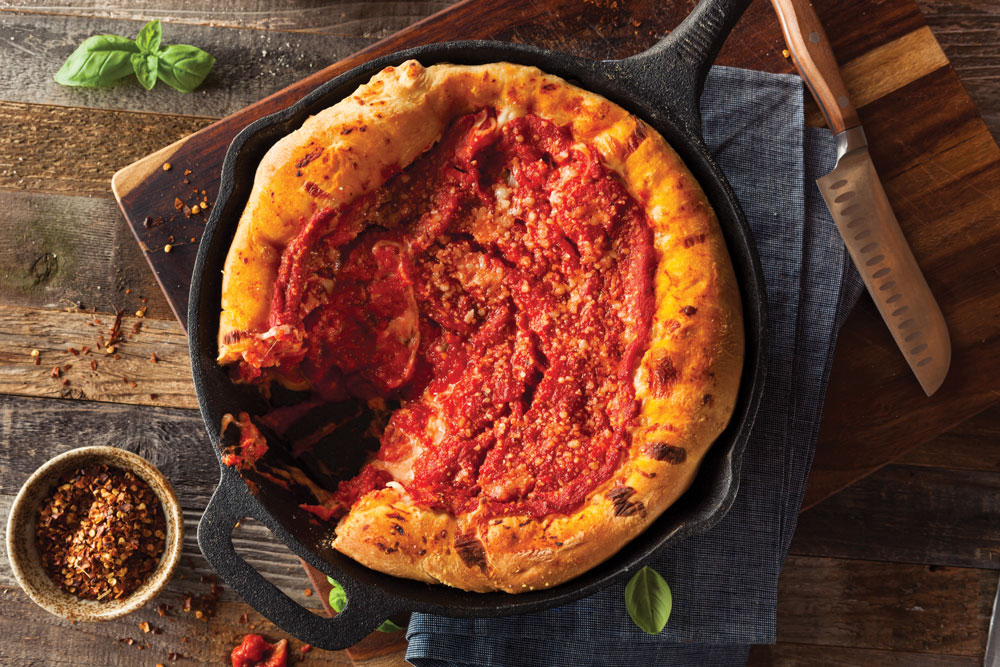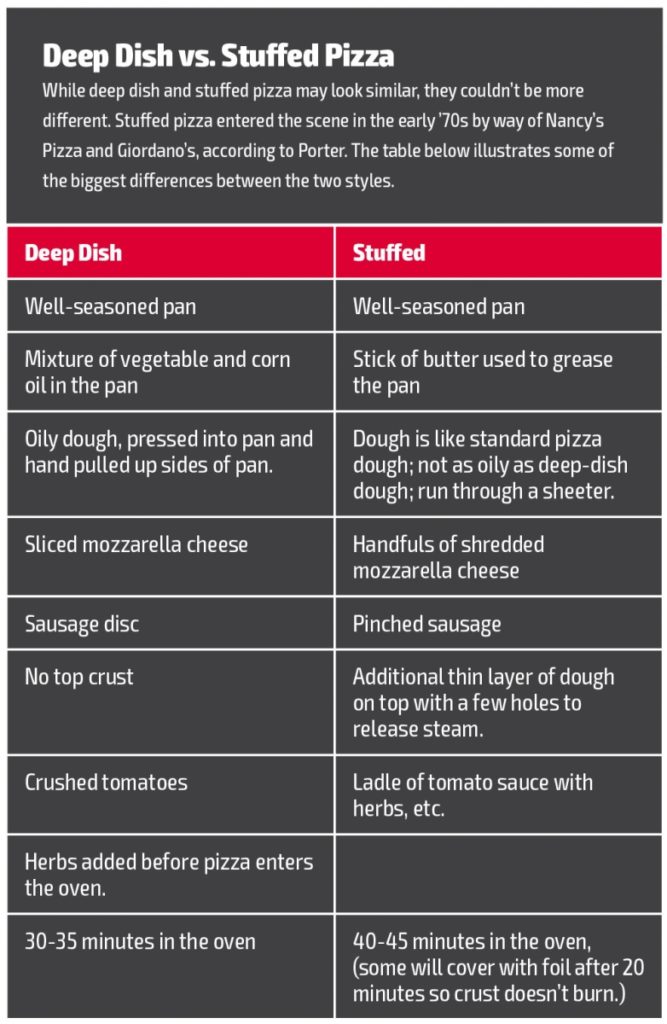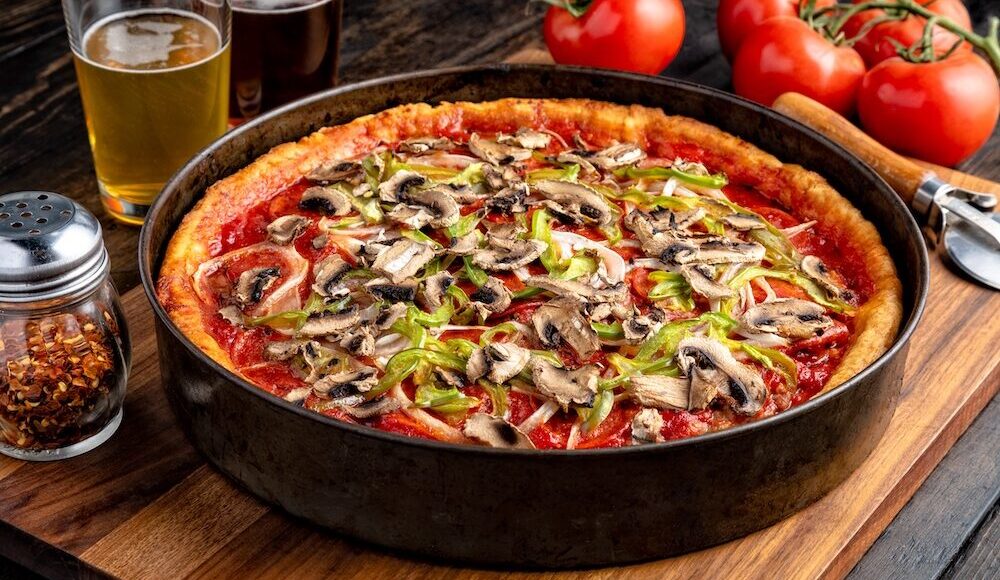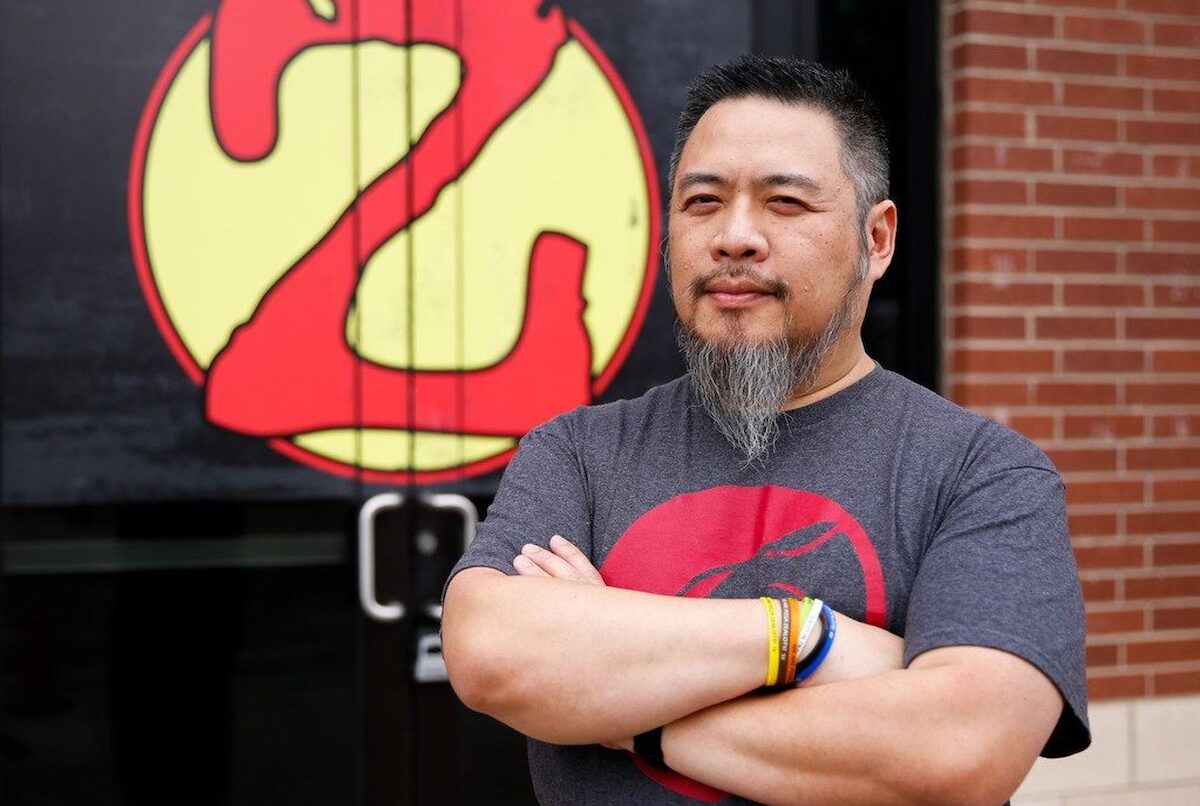Over the years, we’ve come to find that Chicagoans prefer alternatives to the city’s famous deep-dish pizza by a pretty wide margin. According to Jonathan Porter, Chicago pizza expert and owner/operator of Chicago Pizza Tours, “The No. 1 pizza in all of Chicago is the thin-crust, tavern-style pizza, which is a circular pizza, cut into squares, that has a cracker-like crust. It accounts for about 80% of all pizza being sold in Chicago,” Porter told PMQ. “But a lot of places will put a stuffed pizza, similar in size to a deep dish but different in every other way, on the menu alongside tavern-style, because they can use the same dough for both.”
But just because Chicagoans have grown to love tavern-style, that doesn’t change the fact that Chicago deep dish will always have its place in the city’s food culture. The style is so popular, in fact, it has spread to other parts of the United States as Chicago natives move out of the city and introduce their hometown pizza style to others.
But where did this unique pie, so closely related to Chicago, get its start? Would you believe with a football-playing Texan? With National Deep Dish Pizza Day coming up on April 5, 2024, now seems like a good time to take another look at the controversial and downright bewildering story behind this iconic pizza style.
 Photo by Liz Barrett Foster
Photo by Liz Barrett Foster
 Pan or No Pan? |
| After eating pizzas from several Chicago pizzerias, it becomes apparent that some serve pies in a pan, while others do not. The reason for this is a matter of preference, according to Porter. “Most stuffed pizzas are taken out of the pan, cut, and put on a serving tray,” says Porter. “Other pizzerias will pre-cut the pizza in the pan in the kitchen and the server will complete the cut with a spatula at the table; it’s all a matter of preference.” |
Digging Deep
The origins of Chicago deep dish are a bit cloudy, if not a little weird. While everyone agrees that the pizza got its start at Pizzeria Uno in 1943, not everyone agrees on the original creator. At the time, Ike Sewell owned Uno and was working with a couple of people who could have been the pizza’s originators. Many believe it was either a collaboration between Sewell and his business partner Ric Riccardo (born Richard Novaretti), or chef Rudy Malnati Sr.
Porter, who has been researching Chicago pizza history for more than 15 years, said, “In the beginning, Sewell, who was from Texas, wanted to open a Tex-Mex restaurant. When the food he cooked for Riccardo made him sick, Riccardo left town for two months (presumably to Italy), came back, and said the business partners should make pizza.”
Sewell was a former All-American guard for the Texas Longhorns. So, not surprisingly, he had a Texas-sized appetite.
“Sewell wanted a pizza that was a meal,” Porter said. “Everything is bigger in Texas, or so they say.” But, when the partners realized that they didn’t know how to make pizza, Porter said, they went out and hired Rudy Malnati, Sr. to create one for them. “Malnati based his recipe off pizzas you’d find in the Turano region of Italy, like an Easter pie,” Porter noted. Pizzeria Uno grew to become a great success, warranting the opening of a second pizzeria, Pizzeria Due, down the street from Uno. And Sewell did eventually get his wish for a Tex-Mex restaurant, opening Su Casa next door to Pizzeria Due in 1963.
To add to the confusion, Chicagoan and pizza historian Peter Regas reached his own conclusion about the inventor of deep-dish pizza in 2021. Based on his research, he believes credit should go to Riccardo alone, while a cook from Mississippi named Alice Mae Redmond improved on the dough; she thought it needed to be a little stretchier, so, with her own recipe for biscuits in mind, she added oil to the mix. (If you want to crawl down another rabbit hole, Regas also believes an Italian immigrant named Filippo Milone is the true pioneer of American-style pizza and originally founded both Lombardi’s and John’s of Bleecker Street before passing away in 1924.)
Deep Experimentation
Want to mimic the Chicago deep-dish style in your own pizzeria? As Porter mentioned, with a stuffed pizza, which is like the big brother to deep dish, you can use the same dough as the pizza you already make in your pizzeria. This is the easiest way to start experimenting. All you need is a deep, round pan, a stick of butter, and the ingredients you already have on hand.
Make sure you have your dough rolled out thin, since you’ll be using two doughs for the pie. The top dough should be rolled extra thin, since it needs to cover the toppings. Use toppings traditional to Chicago, such as shredded mozzarella and sausage, and make sure you get a nice coating of butter in the pan for your base. Top it all off with a robust homemade tomato sauce and, before you know it, you’ll be singing Sinatra’s “My Kind of Town.”

Liz Barrett Foster is the former editor-in-chief of PMQ and author of Pizza: A Slice of American History. This story has been updated from the original version that appeared in the October 2018 issue of PMQ.
| Sidebar: The Deep-Dish Family Tree |
| All pizza towns have a family tree, with branches extending out from the originator. In Chicago, history tells us that deep dish pizza began at Uno, with the original recipe created by Ric Riccardo or Rudy Malnati Sr. From there, legend says that Uno chef Alice Mae Redmond was eventually recruited away from Uno by Fred Bartoli and Sam Levine when they wanted to open the first Gino’s East in 1966. Lou Malnati left Uno in 1971 and opened Lou Malnati’s. Louisa DeGenero, a former waitress at Pizzeria Due, broke out on her own in 1981 and opened a pizzeria called Louisa’s Pizza & Pasta. Not to be outdone, Rudy Malnati Jr., who had worked with his father at Uno and Due, opened Pizano’s in 1991. And, more recently, the grandson of Fred Bartoli, Brian Tondryk, opened Bartoli’s Pizzeria in 2013. |
















